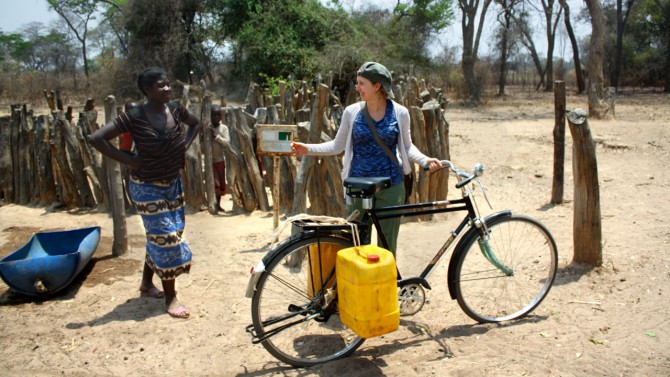
Miombo woodlands near the Lower Zambezi National Park, Zambia.
Small-farm tech reduces deforestation, climate change
By Blaine Friedlander
Small farms in Zambia that use the latest hybrid seed for maize, along with improving health on neutral soils, help reduce deforestation and tackle climate change, Cornell researchers report this month in Global Environmental Change.
“Scientists around the world are trying to reduce rapid deforestation and food insecurity, especially in the tropics,” said Johanne Pelletier, a postdoctoral researcher in the Charles H. Dyson School of Applied Economics and Management and the paper's lead author.
“Smallholder farmers are a cornerstone of food security in the world,” Pelletier said. “The main driver of deforestation is agricultural expansion in Africa, South America and Asia. It is important to learn what works at improving food security and keeping forests standing.”
Pelletier conducted this work as part of the NatureNet Science Fellows Program, a joint research project funded by the Cornell Atkinson Center for Sustainability and The Nature Conservancy. She works in the research group led by Chris Barrett, the Stephen B. and Janice G. Ashley Professor at Dyson.
“There are synergies to using a modern hybrid seed and good agronomic techniques to maintain healthy soils with stopping the degradation of tropical forests and halting climate change,” said Barrett, the paper’s senior author.
“Promoting improved maize seed uptake among smallholder farmers – which Zambia and many other governments do – is not only boosting yield, but it is reducing pressure on large forests,” Barrett said. “This is good news.”
This debate on agricultural productivity and deforestation can be traced back to the late Norman Borlaug, a Nobel Peace Prize laureate and father of the Green Revolution, and his hypothesis on agricultural intensification. He believed that the use of better inputs, such as improved seed and organic fertilizer on smaller tracts, would naturally keep smallholder farmers from tearing down the forests.
Rural poverty is widespread in Zambia, as the country’s economy relies on agriculture and mining. Small-scale farms employ 72% of Zambia’s workforce, according to the United States Agency for International Development.
Zambia has about 44 million hectares of forests that are dominated by the Miombo Woodland, an ecological region that is home to a diverse population of wildlife. The total mass of the forests has substantially dwindled since 2000: Zambia lost more than 1.3 million forested hectares between 2000 and 2012, which is referenced in the paper. A hectare is approximately 2.5 acres.
The Zambian government is looking at ways to reduce national deforestation.
“If we can produce more food per hectare with better seed, and by improving soil health,” Pelletier said, “we can protect those much-needed forests.”
In addition to Pelletier and Barrett, co-authors were Hambulo Ngoma, of the Indaba Agricultural Policy Research Institute, Lusaka, Zambia; and Nicole M. Mason, associate professor of agriculture, food and resource economics at Michigan State University.
Media Contact
Get Cornell news delivered right to your inbox.
Subscribe

